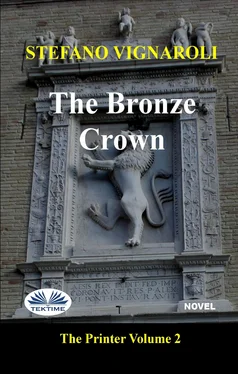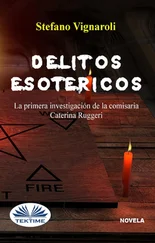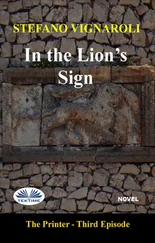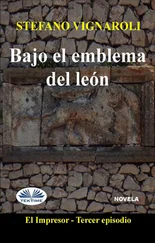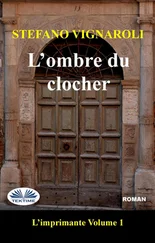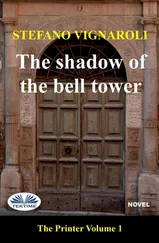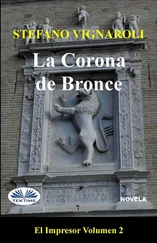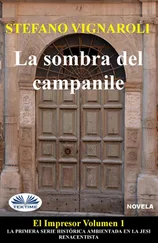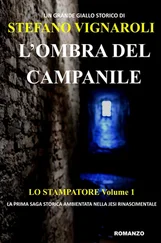Lucia had worked hard, and not a little, to bring comfort to the plague-stricken. The disease had arrived in Jesi with a crate of hemp, coming from the markets of the East, bought at a bargain price at the port of Ancona by a family of Jesi’s “string made”. Some families living in the village of Sant’Alò were renowned since time immemorial for the skill and care with which they made ropes. They had their own system for obtaining cordage and ropes of all lengths and sizes from raw hemp, which were sold on the market at competitive prices compared to those manufactured in other parts of Italy. As soon as Berardo Prosperi, the head of the family, opened the box to check the quality of the hemp bought by his son and nephew, he was attacked by fleas, who finally free sought their blood meal, to the detriment of many members of the bourgeois community. The houses of the people that made strings were low buildings, which formed a single row, one attached to the other, at the edge of a large square, called “meadow”, where those craftsmen worked, essentially outdoors. In fact, they needed large spaces, where they could stretch the hemp fibres and weave them into ropes, with the help of strange wheel-like devices.
No one noticed the insect bites because they were accustomed, but after a few days Berardo and some other men and women of the village fell sick, with a high fever, and with bubbles in various parts of the body, some on the back, some behind the neck, some on the belly. The disease had quickly spread from one house to another, all attacked as they were, and then it had spread to the countryside. But soon it had also struck families living in the city, within the city walls.
Lucia had learned from her grandmother how to try to cure the plague victims. She had heard that in Ancona, where the disease had spread exponentially, those who could afford it were hospitalized and treated in the “Lazzaretto”. But according to her it was not a very wise idea to concentrate the sick people in one place. It was better to keep the sick person isolated in his house, to avoid infecting healthy people in turn; only by taking the appropriate precautions could one approach him. When she had to enter a sick person’s room, Lucia would cover herself well with warm clothes, but only after she had sprinkled an ointment of lemongrass, basil, mint, wild grass and thyme all over her body. The smell that emanated was almost nauseating, but it was an excellent remedy for not getting stung by fleas and lice that, who knows why, always haunted the homes of the plague victims. With a silk handkerchief, she also covered the mouth and nose before approaching the sick persons, in order to avoid breathing the bad moods emitted by them. The first thing to do was to strip the patient to see how many pustules he had on and what they looked like. If they were hard and dark, they should be smeared with an ointment of camphor oil and ichthyol in order to soften and mature. In fact, the pustules had to explode and to make their bad content, called by the doctors with the term “pus”, come out. The fever had to be fought with infusions based on willow bark and with the application of wet patches on the forehead of the patient. The whole house had to be purified with fumigations obtained by burning camphor oil, in which sprigs of cypress, pomegranate peel and cinnamon had been left to macerate for a few days. Lucia knew very well that if the sick person had difficulty breathing he was condemned to death. It mights as well have called a priest to give him last rites. But no religious, first of all Father Ignazio Amici, lent himself to bringing the rite comforts to the plague victims. They were all too afraid of being infected in turn. If, on the other hand, the pustules, within a few days, usually a week, softened and let the bad moods out, giving rise to scars, the patient could consider himself out of danger and would be on his way to recovery. When a plague patient died, all the furnishings, furniture, bedding, blankets and everything that came into contact, directly or indirectly, with the infected person had to be piled up in front of his home and set on fire. The corpses could not find burial inside the churches, but were taken to the open country and buried deep under a large layer of earth, better if clayey.
Lucia had thus brought help to hundreds of sick people, both in the city and in the villages and countryside, and thanks to the precautions she had taken she had never become infected. She felt satisfied, but tired. Walking backwards along the Via di Terravecchia, after having visited a sick person near the church of St. Nicholas, she had to pass by several houses, in front of which the purifying bonfires were burning. The air of the summer day, already full of humidity, was made even heavier by the smoke that hovered over the city and partly obscured the sun’s rays. When she arrived in Piazza della Morte, she could not help thinking that, in days, a gallows would be reserved for her handmaiden Mira, accused of having killed Cardinal Artemio Baldeschi. She chased away that grim thought and slipped inside Porta della Rocca, gaining Via delle Botteghe, a much more pleasant and healthy area than the streets he had travelled until just before. It seemed almost as if the ancient Roman walls, strengthened and rebuilt a few decades earlier thanks to the ingenuity of the architect Baccio Pontelli, had acted as a natural bulwark to the plague epidemic, which had affected only a few inhabitants of the historic core of the city. As soon as she gained that comfortable environment, Lucia lowered the handkerchief through which she had filtered the air to breathe. She untied her hair, leaving it free to come down on her shoulders and along her back, then with her hands she tidied up her wrinkled dress. Of course, she did not have the elegant appearance that would have imposed his rank, but he felt more presentable. In a few steps he reached the Domus Verroni, slipped under the arch and looked for Bernardino. She saw him busy restoring his shop but, almost sensing his arrival, he was the first to call her.
«My Lady! What a joy to see you here. As you can see, there’s so much work to be done, but I’m trying hard. I believe that in no more than a month’s time the printing works will be back at full capacity. And all thanks to you. I must be very grateful to you for all that you have done for me, and the first work I am going to publish will undoubtedly be your treatise on The Principles of Natural Medicine and Healing with Herbs.»
Lucia smiled smugly, but Bernardino felt the force of that smile, trying to overcome the tiredness that was gripping her.
«But you, Madonna, are really tired. I don’t want to reproach you for anything, but I think it’s time you stopped visiting all these plagued people. Sooner or later you’ll get sick too. Don’t you think about your daughter Laura? And Anna, who is another daughter to you? How could they do without you? You’re the last Baldeschi alive, take responsibility, once and for all! And not just towards the girls, but towards the whole town.»
«Oh, Bernardino, don’t start with the stories I have to take back the city government. I told you: I’m a woman, I don’t feel like occupying a place that has always been rightfully a man’s.»
«There isn’t a man in this town worth half what you are. It shows what you’ve done and are doing for sick’s. But it’s not enough. You cannot leave the city in the hands of incompetent nobles, who let Cardinal Cesarini’s vicar do his comfortable swine, terrorizing the city and the countryside, and demanding taxes and leaps from men tormented by misery and pestilence. It’s time to send away Cardinal and Vicar, and only you are capable of doing so, taking in hand the sceptre that is rightfully yours. And then there is Mira! Have you forgotten her? You promised to protect her, but the trial has gone ahead. And now, on top of that, there’s the charge of witchcraft for her!»
Читать дальше
